Under Implementation
Taxonomy Term List
Advancing Albania’s planning for medium and long-term adaptation through the development of a National Adaptation Planning (NAP) process
This project is designed to help the Government of Albania increase its capacity to address the country’s climate change vulnerabilities by supporting the development of a national plan for climate change adaptation. The support focuses on 1) strengthening the national mandate, strategy and steering mechanism for assessing and addressing capacity gaps (particularly in the priority sectors of tourism, urban development, agriculture, transport, and energy); 2) develop a National Adaptation Plan (NAP) Strategy action plan and implementation plan, and 3) develop financing, monitoring and evaluation strategies to ensure that capacities and funding options are institutionalized for the long-term sustainability of adaptation planning beyond the life of the project.
With financing from the Green Climate Fund, the project "Advancing Albania’s planning for medium and long-term adaptation through the development of a National Adaptation Plan (NAP) process" is supporting the Government of Albania to increase its capacity to address the country’s climate change vulnerabilities.
Albania’s primarily rural population is highly vulnerable to the effects of climate change, where extreme rain events frequently result in destructive flooding, while agricultural livelihoods and drinking water supplies are threatened during dry periods. As temperatures rise, climate scenarios predict increased severity and frequency of these extreme wet and dry conditions, along with decreasing annual rainfall. These changes place Albania’s population at risk and pose a threat among others to the hydropower and tourism industries.
To address these vulnerabilities, the Government of Albania launched its NAP process in February 2015, with the support of GIZ and UNDP, through consultations with national stakeholders and a stocktaking exercise. A preliminary roadmap for the NAP implementation was formulated and validated by representatives from the Ministry of Tourism and Environment, as well as stakeholders from the Inter-ministerial Working Group on Climate Change (IMWGCC).
The analytical exercises highlighted the existing weaknesses and demonstrated the prevailing barriers to climate change adaptation (CCA) planning in Albania. The results confirmed that to adequately address climate change vulnerabilities, Albania must overcome information gaps, vulnerability assessments, climate adaptation planning capacity weaknesses, and a lack of awareness of CCA – both at national and sub-national levels. In addition, climate change is not integrated into existing environmental and development policies or their associated budget priorities, and financing appropriations for adaptation are absent.
The underlying challenge lies in the lack of a comprehensive framework for adaptation in Albania. The National Communications provide a preliminary assessment of adaptation priorities, while a national NAP Framework Document was developed as part of the NAP preparation and stocktaking process in 2016. To leverage these preliminary activities towards climate resilience, this readiness effort aims to address the weaknesses and barriers identified in the NAP Framework Document.
In September 2021, Albania submitted its National Adaptation Plan, including a comprehensive financing strategy to the UNFCCC.
The project aims at delivering the following results under the three main outcomes:
- Strengthen legal and institutional framework and mandate for climate change adaptation work at the national level;
- Upgrade stocktaking on climate vulnerabilities, adaptation opportunities and development needs and update vulnerability analyses;
- Address adaptation related capacity gaps at national and subnational levels;
- Establish long-term adaptation capacity development methodologies to ensure ongoing skills development and increased awareness of climate change adaptation;
- Formulate NAP Strategy action plan and the accompanying communications plan;
- Promote CCA integration into existing planning and budgeting and cross-sector coordination;
- Develop NAP implementation plan;
- Establish systems to monitor NAP process and adaptation progress;
- Identify options for securing and scaling up financing for adaptation; develop a financing plan.
Project Updates
After the inception workshop in December 2021, the project, in collaboration with stakeholders, established criteria for selecting up to eight municipalities for climate change adaptation roadmaps and identified priority sectors for analysis. UNDP signed a Memorandum of Understanding with Tirana Polytechnic University and the Institute of Geosciences (IGEO) to foster cooperation.
The project also supported the development of a new legal proposal to update the mission of the IGEO to include CCA, as well as the operational manual for the Interministerial Working Group on Climate Change and a draft reporting format for the National Climate Change Committee (NCCC).
Since 2022, the project team has accelerated project implementation, making significant progress in strengthening the institutional framework and capacities for CCA planning. This involved concluding procurement services to implement activities.
Recent successes include the establishment of the NCCC and the finalization of its Operations Manual, the development of a Monitoring, Reporting, and Verification (MRV) system, and progress on legal acts related to the IGEO. Additionally, work was undertaken on climate and socio-economic data analysis, inventory of adaptation projects, capacity assessment at national and subnational levels, and training programs.
In 2023, various stakeholders were engaged and sensitized on the NAP process. Activities have included refining vulnerability and risk assessments, developing a national database for climate change scenarios and sector vulnerability assessment, compiling a regional climate change scenario report, finalizing the expanded stocktaking report organized by priority sectors, and delivering guidelines and screening tools for gender-sensitive CCA planning.
Outcome 1: Institutional and capacity gaps assessed and addressed.
Outcome 2: NAP Strategy action plan finalized and implementation plan in place.
Outcome 3: Financing strategy and monitoring and evaluation for climate change adaptation in medium – to long-term established


National Adaptation Plan (NAP) support project for adaptation planning and implementation in Azerbaijan
Financed by the Green Climate Fund (GCF) this project will support the Government of Azerbaijan (GoA) to facilitate the development of the National Adaptation Plan (NAP) and improve climate change adaptation (CCA) actions in three priority sectors identified by the Ministry of Ecology and Natural Resources (MENR) of the Republic of Azerbaijan through stakeholder consultations: water, agriculture and coastal areas. The NAP readiness support aims to increase climate resilience and adaptation capacity in three priority sectors through the implementation of actions that will reduce or eliminate barriers for an effective adaptation process at the national and local levels.
The primary beneficiaries from this GCF project include the national government, specifically agencies in the three priority sectors, as well as local communities.
The main objective of the “National Adaptation Plan (NAP) support project for adaptation planning and implementation in Azerbaijan” is to increase capacity on climate resilience and adaptation in three priority sectors to reduce or eliminate barriers for an effective adaptation process at the national and local levels.
The Nationally Determined Contributions (NDC) submitted by Azerbaijan in 2017 highlights the need to “develop relevant adaptation measures for decreasing or minimizing the losses that may occur at national, local and community levels per sector.” The priority sectors were identified as water, agriculture and coastal areas. The expected increase in extreme events on the Caspian Sea coastal areas, such as extremely high waves, strong winds and flooding, make those areas particularly vulnerable to climate change and requires the development of targeted adaptation programmes. The stocktaking exercise in 2017 has identified barriers including: a) Limited access to data including limited data exchange by stakeholders in Azerbaijan; b) Insufficient institutional and technical capacity on climate change adaptation at managerial, expert/practitioners and community levels; c) Limited mainstreaming of adaptation in national, regional, local and sectoral planning, budgeting and regulatory framework; d) Limited institutional coordination; and e) Limited monitoring, evaluation and analysis of past and current programmes on climate change adaptation.
This project aims to address the identified barriers and improve adaptation planning in Azerbaijan focusing on three main areas:
- Improve data availability, access and sharing for decision making. The project will establish mechanisms and data solutions to facilitate increased access and sharing of climate and weather information in Azerbaijan, as well as improve the coordination among institutions.
- Enhance institutional and technical capacity for climate change adaptation in water, agriculture, and coastal areas. Limited institutional and technical capacity hinders not only the mainstreaming of CCA considerations into planning processes, but also the implementation of adaptation actions at the national, regional and local levels. A national gender-sensitive CCA capacity building programme will be developed that addresses the gaps in knowledge and capacity of key stakeholders at all levels: from government decision makers and technical personnel, to local communities and the private sector.
- Increase mainstreaming of CCA considerations into planning at national, regional, local levels in the priority sectors. An Adaptation Working Group (AWG) will be established at the national level, a body that will coordinate the development of a NAP Roadmap document. Further planned activities to advance mainstreaming include the development and application of tools (manuals, guidelines) for the inclusion of CCA considerations into sectoral planning, the improvement of the legal framework for adaptation in priority sectors (water, coastal areas, agriculture), the screening, appraisal and accounting of adaptation in public and private investments and the development and implementation of a monitoring and evaluation (M&E) system for adaptation that is compatible with the Strategic Development Road Maps (SDRM) of Azerbaijan.
Project updates
- Comprehensive assessment of existing and needed climate data and vulnerability studies and supplemental CCA vulnerability studies for priority sectors completed.
- Charter for Adaptation Working Group established to coordinate adaptation planning at the national level.
- Climate Vulnerability Index for the country was developed and is available for use. Gender workplan for the project was developed and is used for the project activities.
- Capacity needs assessment for the development of ‘university specialized diplomas and certificates’ for climate change adaptation was conducted.
- The process to develop an online climate change platform is initiated.
- The analyses of the National Legislation on Climate Change was conducted, and the recommendations are being followed-up, including the preparation of new legal documents.
- The series of capacity building and public awareness workshops/seminars for technical personnel and students were organized in the capital as well as in the different regions of Azerbaijan.
- The capacity needs assessment for the decision-makers was conducted and policy briefs were prepared accordingly.
- A workshop, co-hosted by the United Nations Development Programme (UNDP) and the Ministry of Ecology and Natural Resources (MENR), on “Preparation of National Adaptation Plan” was organized to deliver recommendations and possible amendments for Azerbaijani legislation on effectively tackling the impacts of climate change.
- The Project team in collaboration with the Ministry of Ecology and Natural Resources and the Ministry of Agriculture, organized a series of training sessions on “Climate change adaptation in agriculture” to discuss climate impacts and Azerbaijan’s agricultural problems with the local communities.
- In collaboration with the Ministry of Ecology and Natural Resources, the NAP project team held three study tours for Azerbaijan’s government representatives, with a special focus on climate change impacts on the vulnerable sectors.
- The Projects team delivered modern equipment to the Situation Center under the National Hydrometeorological Service.
- In collaboration with the Ministry of Ecology and Natural Resources, the NAP project team organized three study tours for Azerbaijan’s government representatives, with a special focus on climate change impacts on the vulnerable sectors.
- The NAP project team held the School Symposium on Climate Change Mitigation and Adaptation measures for schoolchildren in April 2023. The symposium provided a platform for high school students to showcase their research projects on climate change mitigation and adaptation measures.
- NAP project team has recently organized a study tour for Azerbaijani government representatives, in partnership with the Ministry of Ecology and Natural Resources. Focused on climate change impacts in vulnerable sectors, the tour aimed to educate government officials on effective adaptation practices, particularly in regions facing heightened vulnerability.
Outcome 1: Improved data availability, access, and sharing for decision making.
Outcome 2: Enhanced institutional and technical capacity for climate change adaptation in water, agricultural and coastal areas.
Outcome 3: Increased mainstreaming of climate change adaptation considerations into planning at national, regional, local levels in priority sectors.
UNDP Press release: EU & UNDP keep taking actions to address climate change (2023)
Report.az: UNDP ready to support Azerbaijan’s efforts to combat consequences of climate change (2023)
Azerbaycan24: UNDP ready to support Azerbaijan’s efforts to combat consequences of climate change (2023) Also available in Azerbaijani and Russian.
Video: AzTv on YouTube (in Azerbaijani) (2023)
Knowledge competition dedicated to the World Environment Day was held (2022)
Azerbaijan marks the start of the National Adaptation Plan process for climate change resilience (2021)
Issues related to climate change adaptation plan were discussed (2021)
Issues related to climate change adaptation plan were discussed in ADAU (2021)
Coverage on social media
UNDP Project team collaboration with the Ministry of Ecology and Natural Resources, held three study tours for Azerbaijan’s government representatives on Facebook, X and Instagram.
UNDP organized a study tour for Azerbaijani government representatives, in partnership with the Ministry of Ecology and Natural Resources (Media coverage from Reportyor.za)
The Projects team delivered modern equipment to the Situation Center under the National Hydrometeorological Service on Facebook and X (2023).
Training in Guba and Khachmaz on Facebook, X and Instagram (2023).
Training in Salyan and Neftchala on Facebook, X and Instagram (2023).
Training in Lankaran on Facebook, X and Instagram (2023).
Training in Nakhchivan and Sharur on Facebook, X and Instagram (2023).
A workshop with UNDP and the Ministry of Ecology and Natural Resources (MENR), on “Preparation of National Adaptation Plan” was organized to deliver recommendations and possible amendments for Azerbaijani legislation on effectively tackling the impacts of climate change and featured on Facebook, X and Instagram.

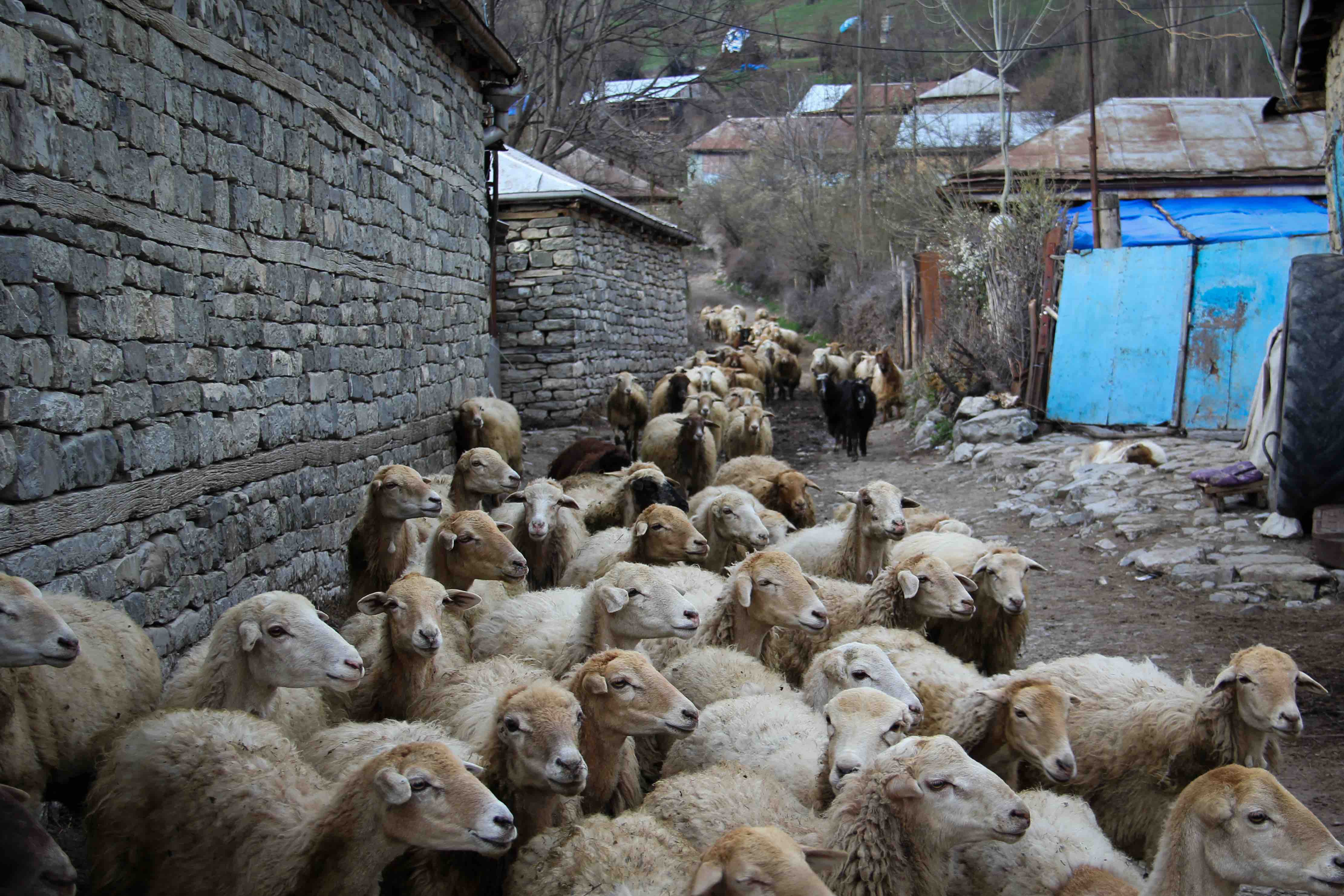
GCF National Adaptation Plan project in Bhutan
Climate change is expected to bring a raft of changes to Bhutan, including long-term impacts such as rising average temperatures, reduced dry-season precipitation coupled with increased wet-season precipitation, intensified rainfall events, erratic rainfall patterns, and altered monsoon timings. Additionally, the country faces heightened risks of hydro-meteorological and geological disasters, including glacial lake outburst floods (GLOFs), landslides, earthquakes, river erosion, flash floods, windstorms, and forest fires due to climate-related factors.
The hydropower, agriculture, and tourism sectors, collectively contributing nearly a quarter of GDP in Bhutan, are significantly vulnerable to climate variability and natural hazards. In response, this project, supported by the Green Climate Fund (GCF), is dedicated to assisting the Royal Government of Bhutan in further advancing its cross-sectoral National Adaptation Plan process. The project's primary goal is to reduce vulnerability to climate change impacts by enhancing adaptive capacity and resilience. It seeks to facilitate the coherent integration of climate change adaptation into new and existing policies, programs, and activities, especially within development planning processes and strategies across various sectors and at different levels. This includes establishing a robust monitoring and evaluation system for effective implementation.
Despite significant socio-economic progress, Bhutan faces the potential reversal of gains due to the adverse impacts of climate change. Bhutan initiated its National Adaptation Plan (NAP) process in 2015, building on the 2012 National Adaptation Programme of Action (NAPA). The NAP project aims to align with Bhutan’s Nationally Determined Contribution (NDC) by accelerating medium- to long-term adaptation efforts, focusing on priority sectors, such as water resources. In addition, the project seeks to enhance Bhutan's NAP process by addressing challenges related to coordination, learning, awareness, technical capacity, systematic identification of adaptation options, and monitoring and evaluation.
National-level outcomes involve enhanced coordination, knowledge management, technical capacity for climate scenarios, vulnerability assessments, appraised and prioritized adaptation options, and the formulation of the NAP with capacity for implementation and monitoring established. These outcomes include both a comprehensive component on water resources and activities across other climate-sensitive sectors in Bhutan. Barriers to adaptation planning in Bhutan are being identified and addressed through the formulation of the NAP, while institutional frameworks and systems are being strengthened to enable long-term decision-making for climate change adaptation.
This initiative, led by the National Environment Commission Secretariat (NEC) in collaboration with various partners, builds on existing coordination efforts with UNDP and past adaptation projects, such as the GCF Readiness and Preparatory Support project “Strengthening the Capacity of NDA to access resources from the Green Climate Fund.” Mandated by Bhutan's environmental protection and water acts, the NEC’s central role is to ensure synergy with ongoing activities and prioritize adaptation options.
Project Updates
The NAP project has achieved significant milestones, including the successful publication of Bhutan’s NAP by the UNFCCC in September 2023, marked by strong ownership from the NEC and effective guidance from the Project Board and Technical Working Group. Additionally, the submitted NAP serves as Bhutan’s Adaptation Communication under the Paris Agreement. The NAP draft was presented to officials from all 20 districts, central-level agencies, development partners, civil society, private sector, and academia. A NAP implementation progress report was also produced aiming to inform the government, public, and international community about Bhutan's advancements in climate change adaptation.
The objectives of Bhutan’s NAP process are to:
1. Ensure a continuous, progressive, and iterative process to assess the vulnerability and adaptation needs across all sectors and levels in Bhutan recognising the special needs of vulnerable groups through the National Adaptation Plan process.
2. Promote the integration of climate change adaptation planning and implementation of adaptation actions into national and local level plans where possible.
3. Enhance the climate information and knowledge system to support a long-term, iterative process of adaptation planning and implementation.
4. Assess progress in adaptation including measurement of resilience and to climate change.
Project activities have made significant strides in establishing institutional arrangements, stakeholder mapping, and drafting NAP protocols and guidelines. Bhutan has successfully conducted capacity assessments, participated in global events, and developed data management protocols and a climate platform. Activities like stocktaking of climate information, vulnerability analyses, and sector-specific training programs have contributed to increased awareness and improved capacity. Notably, climate training sessions were conducted for mid-level civil servants in all 20 districts and 205 local governments and a report on climate change vulnerability analysis and mapping was compiled to evaluate vulnerable regions.
The NAP has actively incorporated insights from past vulnerability assessments, ensuring a thorough understanding of sector-specific vulnerabilities across Bhutan, including those from the Third National Communication (TNC) to the UNFCCC and various sectoral reports. This has supported sector prioritization and climate risk assessments on agriculture, health, forests and biodiversity, energy, and water resources. This includes a comprehensive assessment of groundwater in Sarpang District and preparations for the GEF-LDCF Urban Resilience Project, with a focus on Thimpu and Paro areas, addressing a mix of hard and soft adaptation priorities outlined in the NAP. Three key proposals have concentrated on green infrastructure for Thimphu City, web-based meteorological services, and a hydrological system for flood forecasting and early warning services, further contributing to Bhutan's robust approach to adaptation planning and capacity-building initiatives.
Outcome 1: Enhanced coordination, learning and knowledge management for an iterative NAP process.
Outcome 2: Technical capacity enhanced for the generation of climate scenarios and impact assessment.
Outcome 3: Vulnerability assessments undertaken and adaptation options prioritized.
Outcome 4: NAP formulated and capacity for implementation and monitoring established.
A milestone in Bhutan’s journey to adapt to climate change
Bhutan launches a new $8.9M project to build climate resilience of its water sector
Bhutan launches its first National Adaptation Plan
Safeguarding Bhutan's water in the face of climate change
NAP Expo 2023: What we heard on scaling up implementation of...
Bhutan pursues climate resilience with National Adaptation P...
Facing climate change challenges in the Kingdom of Happiness, Bhutan
Exposure: Advancing climate adaptation in Bhutan
Bhutan's climate ambition: showcasing leadership, delivering inclusive action
Exposure: At one with nature: Towards climate-resilient people, forests and wildlife in Bhutan
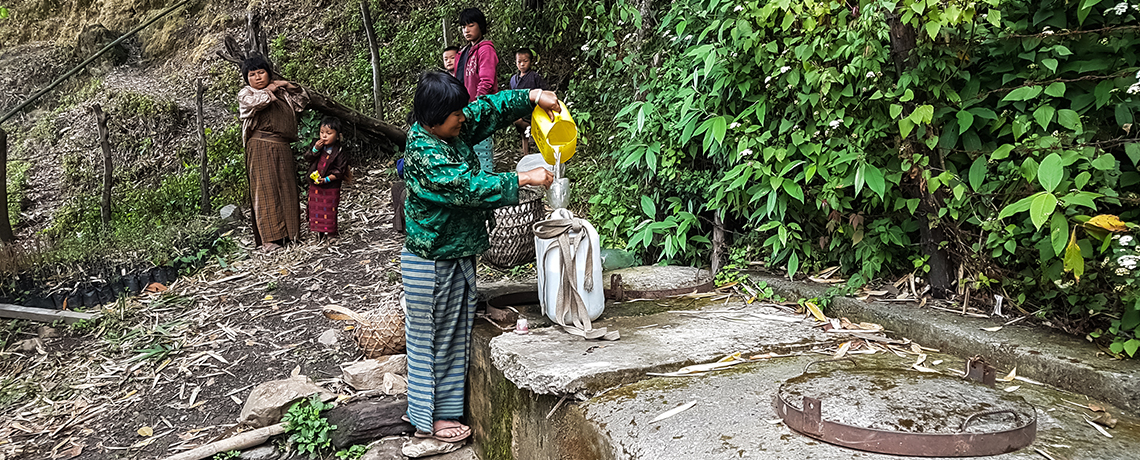
Formulation and Advancement of the National Adaptation Plans Process of Egypt
The project is advancing the development of Egypt’s National Adaptation Plan (NAP) with the goal of decreasing vulnerability to climate change. This NAP process is helping Egypt to build climate resilience by improving institutional and technical capacity for climate change adaptation planning, evaluating climate risks, determining adaptation priorities, integrating adaptation into national and sectoral planning and budgeting, and increasing investment in adaptation actions.
The project is expected to equip the Government and relevant ministries with information on climate risks and vulnerabilities and priority adaptation areas, as well as help the government to implement effective adaptation planning.
The project “Formulation and Advancement of the National Adaptation Plans Process of Egypt” started in July 2021 with the main objective of decreasing Egypt’s vulnerability to climate change by advancing the NAP development. The NAP project is helping the country build climate resilience by improving institutional and technical capacity for climate change adaptation planning, examining climate risks, determining adaptation priorities, integrating adaptation into national and sectoral planning and budgeting, and increasing investment in adaptation actions.
Climate change impacts in Egypt include the rising sea level, extreme weather events such as heat waves, flash floods, heavy precipitation, sand and dust storms, and water scarcity. These complex climate-related challenges threaten agriculture, food security, human health, and the national economy. Egypt‘s ability to respond to these impacts is challenged by low technical capacity for adaptation planning and limited information on climate risks and vulnerabilities. To address the risks, the Government of Egypt began a NAP process in May 2015, which resulted in a roadmap for advancing adaptation planning.
The 2017 stocktaking exercise assessed accomplishments since 2015 and identified priority interventions for the NAP process. Based on this assessment, the NAP project focuses on the following outcomes: (1) Strengthening institutional and human capacities to coordinate and manage climate change adaptation planning and implementation; (2) Developing an integrated national climate risk assessment and identifying adaptation priority areas for inclusion in a National Adaptation Plan Framework document; and (3) Mainstreaming adaptation priorities into national planning and budgeting processes.
Target outcomes will equip Egypt with the required climate risk information and understanding of priority adaptation areas to enable the government to conduct effective adaptation planning and start integrating climate adaptation into national development planning and budgeting. As a result of project activities that improve capacity and climate adaptation governance, national ministries and the Government of Egypt will be empowered to help programs and projects across national and sub-national processes be more climate risk-informed, and climate adaptation indicators will be specifically incorporated into the national development strategy “Egypt Vision 2030”.
Recent Activity
The Food and Agriculture Organization (FAO) hosted a training workshop as part of the FAO-UNDP SCALA program(Scaling up Climate Ambition on Land Use and Agriculture through Nationally Determined Contributions and National Adaptation Plans). The workshop focused on facilitating dialogues within the Ministry of Agriculture and the Ministry of Environment, providing skills to generate crucial information on climate impacts and solutions in agriculture. The insights are contributing to Egypt's NAP process, aligning with the national vision for 2030 and sustainable development. The SCALA program, funded by the German Federal Ministry for the Environment, Nature Conservation, Nuclear Safety and Consumer Protection (BMUV) through the International Climate Initiative (IKI), aims to integrate climate-resilient agricultural practices into NAPs and enhance capacities for effective climate risk management in Egypt.
Outcome 1: Strengthening institutional and human capacities to coordinate and manage climate change adaptation planning and implementation;
Outcome 2: Developing an integrated national climate risk assessment and identifying adaptation priority areas for inclusion in a National Adaptation Plan Framework document;
Outcome 3: Integrating adaptation priorities into national planning and budgeting processes.
SCALA supports Egypt with integrating agriculture into the National Adaptation Plan (2023)
Video: Using the power of nature to fight climate change in Egypt (2023)
NAP Inception Workshop (2023)
Egypt scales up climate adaptation actions of its agriculture, water and agrifood sectors (2022)
Egypt’s Environment Ministry signs document formulating National Adaptation Plan (2021)
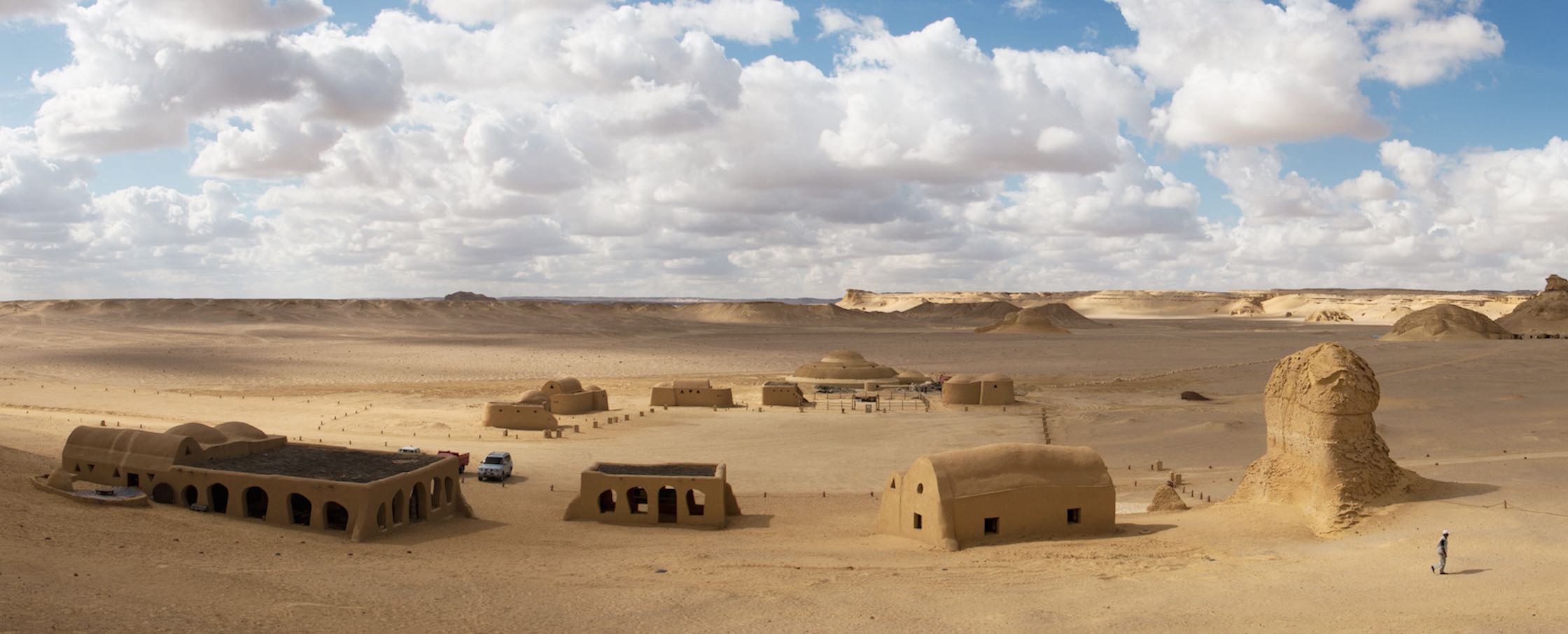
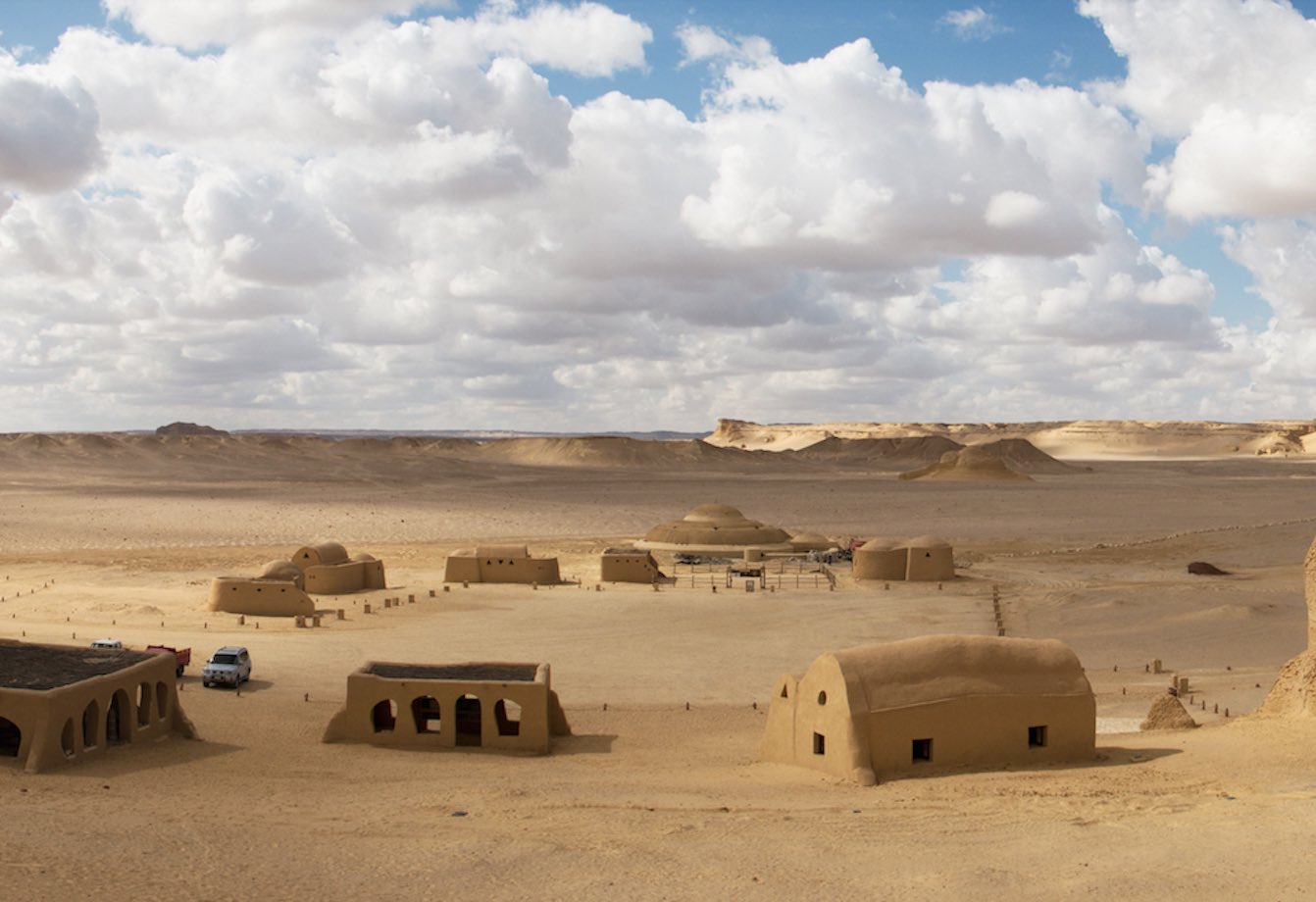
Accelerating Climate Change Adaptation Investment Planning to Enhance Resilience in Indonesia
The project supports the implementation and monitoring of the National Action Plan for Climate Change Adaptation in Indonesia (RAN-API). Operating at the national and sub-national levels, national-level activities are updating and strengthening the National Action Plan for Climate Change Adaptation (RAN-API) and enhancing the vulnerability monitoring system (SIDIK), incorporating a gender-responsive approach. Meanwhile, local activities are concentrating on risk-assessments and landscape-based adaptation for the archipelagic island site of Wakatobi. The project is focused on addressing challenges, including weak coordination and cross-sectoral information sharing, underrepresentation of vulnerable groups, and lack of adaptation criteria application in budget tagging.
The project “Accelerating Climate Change Adaptation Investment Planning to Enhance Resilience in Indonesia” addresses the barriers to adaptation planning and ensures that the National Action Plan for Climate Change Adaptation (RAN-API) is well coordinated, implemented, and monitored. The project has both a national and sub-national dimension: at the national level, it supports the next update of the RAN-API and enhances relevant assessment and budgeting systems. At the sub-national level, the project enhances landscape-based adaptation planning approaches in the archipelagic island site of Wakatobi that may be scaled up in the future. The Wakatobi District was chosen as an appropriate piloting site due to its manageable size, coastal location, and archipelagic landscape. As a marine national park, it also presents the opportunity to explore and develop ecotourism as a potential adaptation option.
Climate change impacts are already evident across various economic sectors in Indonesia. The most dominant disasters in Indonesia are floods, windstorms, landslides, and droughts, and these events are expected to be further exacerbated by climate change. The NDC (submitted in 2016 and updated in 2021, with an enhanced version released in 2022) has identified both mitigation and adaptation priorities to address these threats. Climate change adaptation has already been integrated into the country’s development planning through the National Action Plan for Climate Change Adaptation (RAN-API 2013–2025) and the fourth Medium Term Development Plan of Indonesia (RPJMN 2020-2024). While Indonesia’s adaptation planning process is considerably developed, several barriers to enhanced adaptation planning and implementation of adaptation options remain. These include a lack of effective coordination, the absence of an updated adaptation plan, inadequate focus on identifying adaptation options in vulnerable areas, unavailability of detailed information and vulnerability assessments for adaptation planning at national and sub-national levels, and challenges in tracking adaptation-related investments at national and sub-national levels. In addition, the lack of capacity for adaptation planning and budgeting is a cross-cutting issue for national ministries and sub-national governance structures.
The project aims at delivering the following results under the three main outcomes:
- RAN-API coordination and implementation strengthened;
- Legal standing for RAN-API to ensure planning and budgeting related to climate change adaptation in place;
- The RAN-API updated, including the formulation of a comprehensive financing strategy;
- Climate change budgeting system for adaptation enhanced.
- SIDIK enhanced, gender-responsive climate change risk assessment process developed;
- Existing science base for RAN-API reviewed and improved;
- Stakeholder capacity built for climate risk and impact assessment, and identifying suitable adaptation measures.
- Government staff in Wakatobi trained on gender-responsive climate risk assessments;
- Climate risk assessment for Wakatobi islands conducted using landscape-based adaptation;
- Government staff in Wakatobi trained on gender-responsive adaptation planning and budget tagging;
- A gender-responsive adaptation planning and budget tagging system developed and implemented in Wakatobi.
Outcome 1: The National Action Plan for Climate Change Adaptation (RAN-API) updated and climate change adaptation integrated in budgeting systems.
Outcome 2: Vulnerability and risk assessment process (SIDIK) enhanced at the national level for sectors identified in the adaptation component of the Nationally Determined Contributions (NDC).
Outcome 3: Integrated risk assessment and landscape-based adaptation planning and budgeting established in Wakatobi.
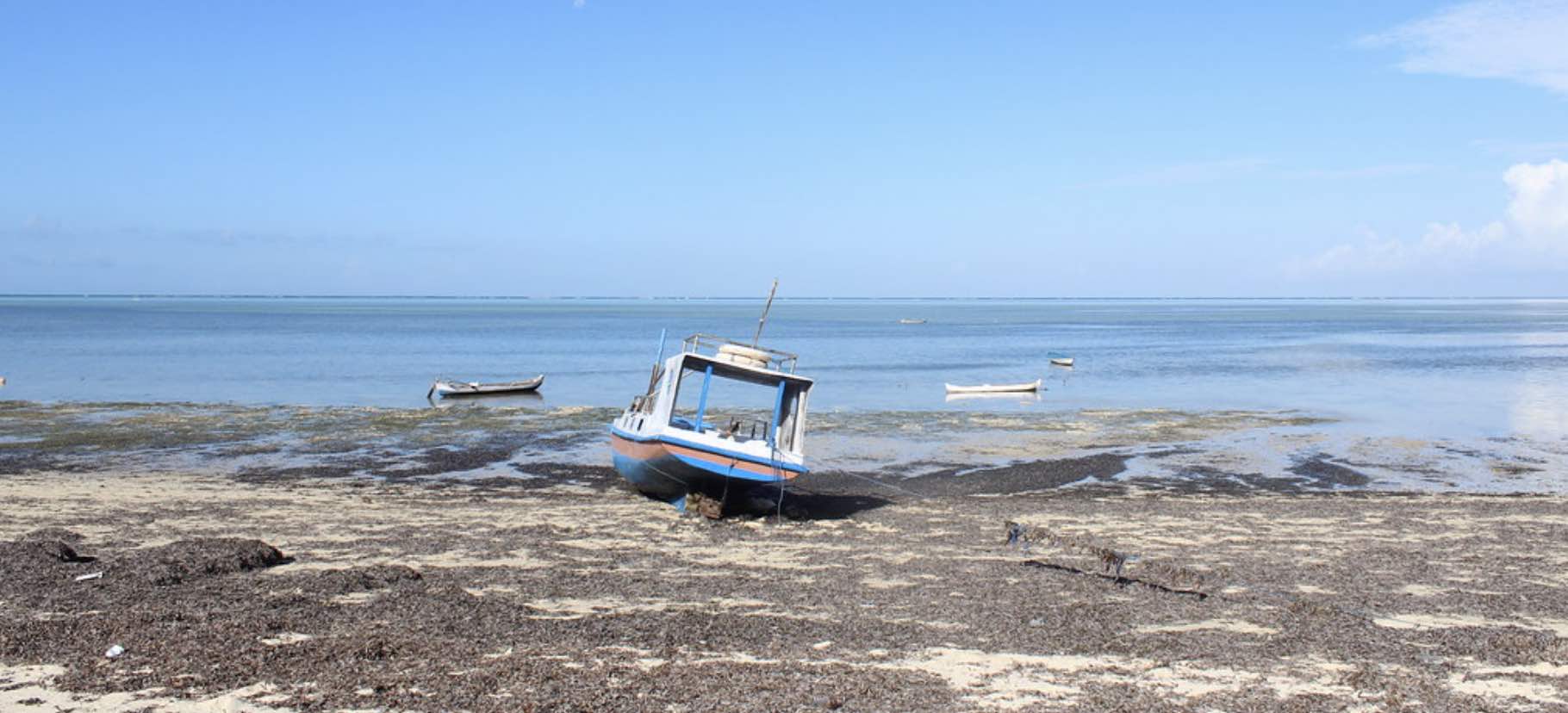

Enhancing Montenegro’s capacity to integrate climate change risks into planning
The project aims to improve Montenegro’s institutional capacity for long-term adaptation planning by strengthening its institutional coordination framework, expanding the technical capacities of those responsible and involved in adaptation planning, enhancing the evidence base required for effective decision-making, and developing a resource mobilization strategy. The project focuses on the national level and operates across four priority sectors—water resources, public health, agriculture, and tourism—aligned with existing government policies.
The overarching objective of the project “Enhancing Montenegro’s capacity to integrate climate change risks into planning” is to improve the country’s institutional capacity for long-term adaptation planning. To achieve this, the project focuses on (1) improving the institutional coordination framework and increasing institutional capabilities, (2) increasing climate information and identifying potential adaptation measures, and (3) identifying financial requirements and resources to fund adaptation investments.
The projected impacts of climate change in Montenegro include increased frequencies and intensities of floods and droughts, water scarcity, and intensification of erosion, sedimentation, snowmelt, sea level rise, as well as damage to water quality and ecosystems. To address climate change risks, the Government of Montenegro has taken several foundational steps to develop a long-term adaptation planning process that is anchored in the National Climate Change Strategy by 2030 and Montenegro’s National Communication. While these steps provide a starting point, several gaps were identified: (1) An underperforming coordination framework, (2) a lack of institutional capacity, (3) insufficient information, and (4) a lack of finance to fund adaptation investments, and (5) a private sector that has a low capacity to understand and respond to climate vulnerabilities and risks.
This project aims to establish a foundation for systematic and iterative adaptation planning in Montenegro by identifying climate risks and adaptation options. Focusing on four key sectors, the strategic approach aims to enhance resilience, facilitate access to international funding sources, and engage the private sector in providing financial resources. The project will also strengthen the awareness and capacities for adaptation planning of multiple stakeholder groups to create a better learning environment and iterative adaptation planning and action. The project is the first stage (Phase I) of what is intended to be a two-staged approach to utilizing Green Climate Fund support for adaptation planning. The second stage will build on Phase I, amongst others, by expanding the adaptation planning process to additional sectors, integrating the private sector further, and enhancing strategies for financing and tracking adaptation finance.
Project Results
Output 1.1: Institutional Capacity for Adaptation Planning Assessed and Enhanced
Capacity gap assessments have been conducted, focusing on key government stakeholders, the private sector, and civil society organizations. An assessment of the capacity of institutions in terms of adaptation to climate change and green development was performed.
The evaluation process included more than 300 actors, institutions at the national and local level, public and private companies, operating in various fields. The assessment aimed to determine the public sector’s ability to plan and implement climate change adaptation processes, while analysing the need for capacity building and training of staff. Within this research, the institutions were evaluated concerning seven elements defined by the Capacity Assessment Tool, specifically designed for the implementation of this activity in Montenegro. The results of the initial analysis indicated a general weak systemic coordination and cooperation climate change adaptation. Capacity assessments ranged from low to baseline, while strong capacities to respond to climate challenges were not identified for any of the assessed institutions.
Moreover, collaboration with the Transition towards the low emissions and climate-resilient economy in the Western Balkans and Turkey (TRATOLOW) project and the GoM adaptation focal point was established, resulting in the drafting of a Gender and Climate Change Adaptation Training program. Furthermore, a concept for the Dialogue for Development seminar series was developed and a two-day training workshop on Monitoring and Indicators for Adaptation was conducted in collaboration with TRATOLOW.
In 2023, efforts focused on further improving the gap assessment, developing online training modules, and sustaining the Dialogue for Development Seminar Series. Additionally, the project finalized the design of the Training Terms of Reference (ToR) for the Institute of Hydrometeorology and Seismology (IHSM) staff, initiating the subsequent training process.
Output 1.2: Institutional Coordination to Support Adaptation Planning Strengthened
In the realm of institutional coordination, the project supported the redesign of the National Council for Sustainable Development (NCSD), resulting in the Government of Montenegro upgrading the NCSD as a unit in the Government in 2021. Activities in 2022 saw the operationalization of the NCSD, including key appointments and capacity-building initiatives. The project played a supportive role in amendments to the Law on Protection from the Negative Effects of Climate Change.
In a broader sense, the main task of the Council is to direct and monitor the implementation of policies that determine the country’s development direction and ensure the sustainability of these policies. The Council is a platform for sharing knowledge, expertise, information, and practical experience. In addition to the representatives of relevant institutions, business community and NGOs, the representatives of youth and the media are also members of the NCSD.
The new NCSD held its first constitutive session during the 36th meeting in December 2022. Legal advisory support was extended for further amendments to the Law on Protection from the Negative Effects of Climate Change. The project also aimed to finalize the formation of a working group for Climate Change Adaptation (CCA) and provide support for legislative changes and additions.
In 2023, the project formed a working group for climate change adaptation and continued providing support for legislative changes, reinforcing the legal framework for climate change adaptation.
Output 2.1: Gender-specific climate change-Driven risks and vulnerabilities in priority sectors identified, broad goals, and potential adaptation measures developed
The project has made significant strides in identifying gender-specific climate change-driven risks and vulnerabilities. In 2021, a company was selected to review and consolidate climate risk assessments, engaging in a consultation process and conducting stocktaking workshops.
In 2022, the project prepared initial drafts of climate risk assessments, conducted initial consultations, and initiated the selection process for lead international and local experts. Assessments for climate change-driven risks in priority sectors were finalized and activities progressed with a combined approach involving the lead writer of the NAP and local experts.
In 2023, a company was selected to expand on the prepared assessment and develop guiding materials for the Government of Montenegro (GoM). Additionally, efforts focussed on developing gender-sensitive adaptation goals, targets, and indicators.
Output 2.2: National Adaptation Planning Processes Established
In 2021, a company was selected to undertake a public awareness communications campaign. During this phase, the project participated in a national workshop on climate change and gender, presenting its work to a broader audience.In 2022, the project selected lead international and local experts, finalized the inception report, and outlined plans for a Gender Action Plan and Gender Communication Plan.
Activities included ongoing coordination with the public awareness communications campaign and also focused on increasing awareness and participation in climate change adaptation, supporting events such as Green Schools Day 2022, the presentation of the Second Voluntary National Report (VNR) at the High-Level Political Forum on Sustainable Development (HLPF) in New York, and the Green Montenegro International Film Fest (GMIFF).
In 2023, the project prepared the draft National Adaptation Plan (NAP) for public consultation.
Output 3.1: Mechanisms for Funding Adaptation Investments Identified
The project initiated the selection process and inception phase for activities related to identifying mechanisms for funding adaptation investments in 2022. This involved the development of Terms of Reference (ToR) and subsequent selection processes, which were further developed in 2023.
Output 3.2: Private Sector Engagement in Adaptation Strengthened
During 2022, the project developed Terms of Reference (ToR) for activities related to strengthening private sector engagement in adaptation. The inception phase for these activities was initiated, and implementation of the selection process to further enhance private-sector engagement was developed in 2023.
Outcome 1: Adaptation planning governance, institutional coordination, and technical capacity strengthened;
Outcome 2: An enhanced evidence base for designing gender-sensitive adaptation solutions;
Outcome 3: An adaptation finance mobilization strategy developed.
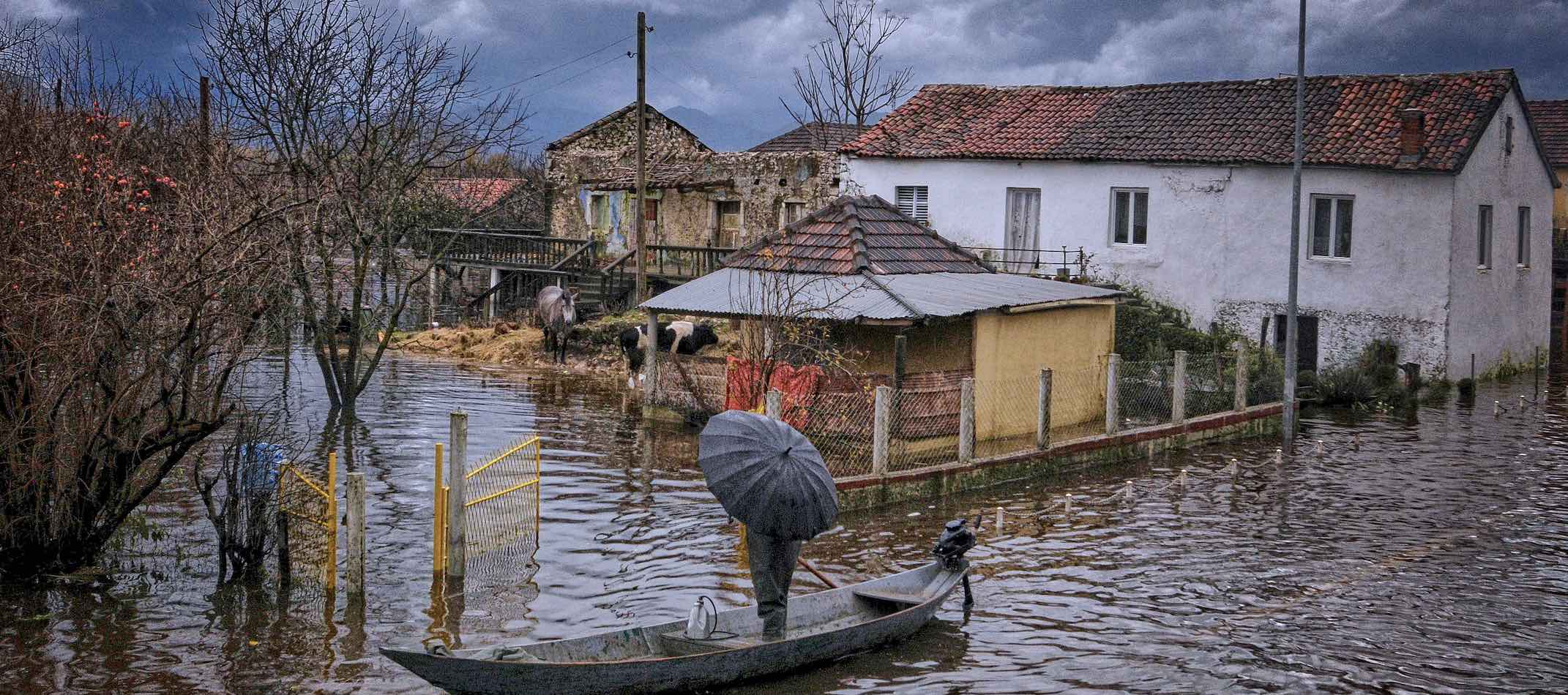
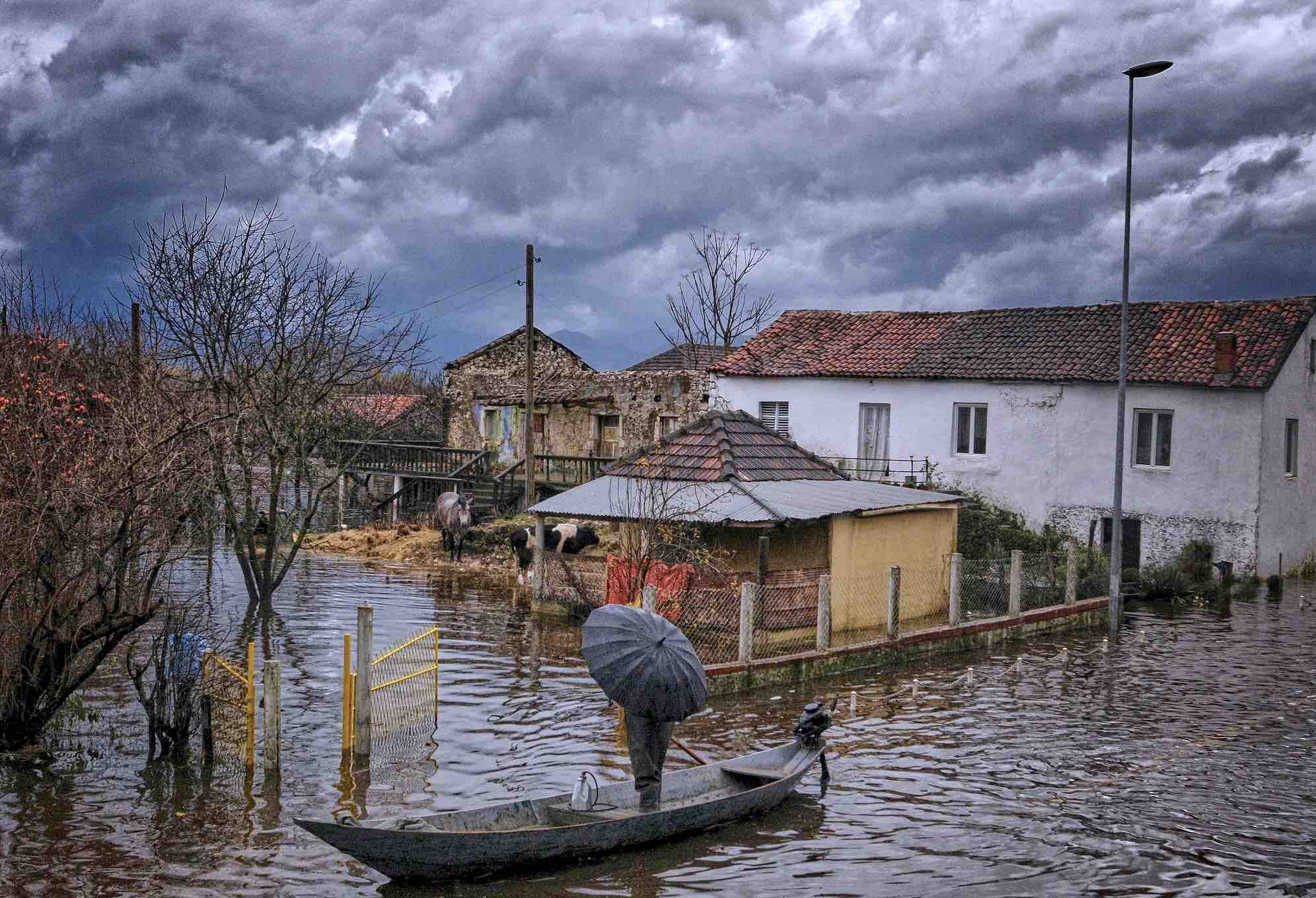
Supporting the foundations for sustainable adaptation planning and financing in Morocco
The project's goal is to support Morocco in creating a systematic framework for integrating adaptation needs into development planning. This involves establishing the foundations for sustainable finance and institutional frameworks for adaptation planning at both national and regional levels. Sub-national activities include developing regional adaptation plans for five regions: Souss Massa, Marrakech Safi, Béni Mellal-Khenifra, Draa Tafilalet and Oriental regions.
Given its geographical location, climate, and coastline, Morocco is highly vulnerable to climate change. The projected impacts by 2050 will significantly affect key productive sectors and infrastructures of the Moroccan economy. In 2022, Morocco suffered from a fourth consecutive year of low rainfall, facing a historic drought. With these structural vulnerabilities, the urgency of adaptation to climate change has become significant.
Morocco has undertaken numerous climate change adaptation and risk management projects, addressing specific issues such as water, agriculture, disaster risk, monitoring frameworks, data, and capacity building. However, these efforts have been implemented in isolation and in a fragmented manner, lacking a cohesive and interconnected approach. Moreover, climate change risks and adaptation needs have been excluded from development planning and investment decisions, particularly at the regional level.
Morocco started its national adaptation planning process in 2015 and developed a detailed NAP roadmap. Achieved in 2021, the NAP serves as a comprehensive medium- and long-term adaptation strategy, incorporating key actions and strategic objectives. The formulation of the NAP involved extensive consultations with key stakeholders and received formal endorsement from the Government.
The Moroccan Climate Change Policy and the NDC (updated in 2021) outline sectoral adaptation goals and targets and highlight critical cross-cutting pillars. The project builds upon the progress to date and helps operationalize the NAP, with a specific emphasis on the subnational level, by translating strategic objectives into tangible actions. Moreover, the project aligns with and complements other ongoing initiatives in Morocco related to adaptation and climate risk management.
In addition to the main project implementing partner, the Ministry of Energy Transition and Sustainable Development, the project works with partners in government, non-governmental organizations, and the private sector. The project seeks to create a framework for systematically integrating adaptation needs into Morocco's development planning, building upon the existing foundation for climate change adaptation. This framework will enable the implementation of high-impact adaptation measures building on strengthened institutional arrangements for adaptation planning, including strategic coherent planning instruments aligned with national priorities and sustainable sources of adaptation finance.
The project aims to design a framework for systematic integration of adaptation needs into the country’s development planning building upon the existing foundation for climate change adaptation. The expected results are grouped around the three main outcomes and include:
- setting up of coordination and governance structure for adaptation at the national and regional levels;
- strengthening national and regional M&E system;
- improving communication and awareness on adaptation planning;
- mainstreaming gender sensitivity into government’s planning processes;
- assessing climate risks and vulnerabilities for key sectors in three regions;
- identifying adaptation options, assessed and prioritized in the three selected regions;
- elaborating five regional adaptation plans;
- sustainable financing of regional adaptation plans;
- strengthened private sector engagement and investment potential.
Project updates
The project inception workshop was held in March 2022 with the participation of all project stakeholders.
Output 1.1. Regulatory text defining coordination structure and institutions mandate is in place.
A work plan and schedule for national and regional coordination bodies were created and approved, including the development of guidelines for climate information collection and for climate change risk and vulnerability assessments at the regional level for key sectors (water, agriculture, and infrastructure).
Output 1.2. National and regional Monitoring and Evaluation (M&E) system for adaptation developed.
Consultations were undertaken on building the M&E system, involving the development of climate change metrics and indicators linked to existing initiatives in Morocco. Activities have included analyzing existing systems, proposing scenarios for consolidating national platforms (MRV), drafting a guideline for gathering standardized climate information, including loss and damage data and socio-economic and gender-disaggregated data to feed into the M&E system, and assessing improvements for the Regional Information System on Environment and Sustainable Development (SIREDD).
Output 1.3. Communication and awareness to support effective adaptation planning improved.
A communication and awareness strategy was prepared and published in 2023, including the design of an adaptation repository website.
Output 1.4. Gender sensitivity is applied and addressed throughout the project life-span.
Stakeholder consultations were held in 2023, including a stocktaking of existing approaches and identifying good practices for gender integration into the project.
Output 2.1. Climate risks and vulnerabilities assessed in key sectors in 5 regions.
Consultations for mapping existing datasets and metrics were launched in 2023, accompanied by consultations for establishing guidelines and methodologies for regional-level climate change risk and vulnerability assessments in key sectors.
Output 2.2. Adaptation measures identified, assessed, and prioritized in the 5 selected.
Adaptation measures have been identified, assessed, and prioritized in five selected regions (Souss Massa, Marrakech Safi, Béni Mellal-Khenifra, Draa Tafilalet, and Oriental). Consultations related to the elaboration of regional adaptation plans for the pilot regions were held in 2023.
Output 2.3. Five regional adaptation plans formulated and integration with regional development and land-use plans facilitated.
The updated territorial climate plans (PCTs) adaptation chapter for the five pilot regions is being developed, along with a guideline for integrating PCTs into regional development and planning. Two interregional dialogues with the pilot regions are being arranged.
Output 3.1. Sustainable financing of regional adaptation plans strengthened.
Efforts to bolster sustainable financing for regional adaptation plans are in progress through consultations and activities. This includes developing an indicative project pipeline and conducting pre-feasibility studies for key adaptation priorities in each region.
Output 3.2. The private sector is strongly engaged and, its capacity to support adaptation is further enhanced.
At the national level, the House of Representatives of the Kingdom of Morocco adopted on October 18, 2022, framework law No. 03.22 forming the Investment Charter. This framework law aims to "promote private investment” to reach the rate of two-thirds of total investment by 2035, following the recommendations included in the New Development Model. This legislative breakthrough is helping to promote private-sector engagement in adaptation.
A two-day national climate investment forum was held in 2023, targeting financial institutions and private equity funds to discuss opportunities and challenges in private investments for adaptation. An assessment of the status, barriers, and opportunities for private sector investment was also undertaken.
Output 3.3. The private sector´s investment potential in adaptation is further strengthened.
The private sector's investment potential in adaptation is being strengthened through activities such as analyzing the interest, feasibility, and costs for setting up business incubators and organizing an ‘Adaptation Innovation Competition’ to encourage innovation and entrepreneurship. Additionally, an analysis of the national catastrophic risk insurance program through a public-private partnership is being conducted.
Outcome 1: The institutional framework for adaptation planning is strengthened and awareness is enhanced at national and regional levels.
Outcome 2: Regional adaptation plans (Territorial Plans against Global Warming) formulated for five vulnerable regions in Morocco and integration into regional development and land use plans facilitated.
Outcome 3: The foundations for sustainable finance for adaptation are strengthened.


Advancing Papua New Guinea’s National Adaptation Plan
The project aims to mainstream climate change into planning and policy frameworks and increase awareness amongst key stakeholders at national and subnational levels. The project supports the country’s Climate Change (Management) Act by strengthening existing frameworks and systems, enhancing the capacities of key stakeholders to effectively contribute to the adaptation planning process, and establishing a mechanism to sustain the process beyond the life of the project. The National Adaptation Plan (NAP) takes a phased approach to implementation, with the first phase focusing on four priority sectors: agriculture, health, transport, and infrastructure. Cross-cutting priority areas also aim to enable the effective and sustained implementation of climate change adaptation strategies and measures by addressing policy, institutional, coordination and technical barriers with a whole-of-society approach.
Under the UNFCCC process, Papua New Guinea’s first National Adaptation Plan (NAP) provides a strategic framework to support country-driven efforts to effectively mainstream adaptation to climate-induced risks within sectoral planning processes. The NAP takes a phased approach to implementation that considers the institutional frameworks, and the first phase focuses on priority sectors: agriculture, health, transport, and infrastructure. By defining a series of strategic actions under cross-cutting and sectoral areas that seek to facilitate the operationalization of the NAP and guide the country’s efforts to achieve Papua New Guinea’s adaptation targets by 2030 through a gender-responsive and whole-of-society approach.
The "Advancing Papua New Guinea’s National Adaptation Plan" project is aimed at strengthening institutional and technical capacities for iterative development of a NAP and integration of climate change adaptation into national and subnational planning and budgeting processes in Papua New Guinea. To achieve this, the project has informed results under three outcomes: 1) Strengthened coordination mechanism for multi-sectoral adaptation planning and implementation at different levels, 2) Integration of climate change risks into key national and sectoral policies and formulation of a National Adaptation Plan, and 3) Establishment of a financing framework for climate change adaptation action for medium-to long-term. This phase of the project has focused on four priority sectors – agriculture, health, transport, and infrastructure, along with cross-cutting areas. A second phase of the project is expected to address gaps in the remaining five priority sectors, in addition to addressing gaps in regulatory frameworks and the evidence base.
Project rationale
Papua New Guinea is highly vulnerable to climate change and is among the ten countries with the highest disaster risk worldwide (World Risk Index, 2021). Papua New Guinea is experiencing increased climate variability through changes in temperature and precipitation, increased intensity of tropical storms, increased coastal erosion and saline intrusion and inundation caused by sea-level rise. Climate change has already begun to cause considerable impact in Papua New Guinea, triggering climate-related hazards, such as heatwaves, landslides, storms, and floods, alongside slow-onset impacts of increased disease and droughts. These impacts have caused substantial damage and affect the daily lives and livelihoods of the nation.
Building resilience to climate change has featured in the national dialogue and political commitments for over a decade. Recognized as an acute challenge for the country, the Government and partners have committed to mainstream climate action in their planning and delivery. Major policy initiatives such as the Vision 2050 and the National Strategy for Responsible Sustainable Development and legislation such as the Climate Change (Management) Act (CCMA) have broadened efforts to include better natural resource management, conservation and sustainable growth. Growing legal architecture has supported these efforts. Papua New Guinea’s geography, its economic base, its exposure to external shocks and limited capacity across the Government, however, make these challenges difficult to address.
Project results
The project has delivered the following results under the three Outcomes.
Outcome 1: The coordination mechanism for multi-sectoral adaptation planning and implementation at different levels is strengthened.
- Reviewed legal and policy barriers to the integration of climate change into development planning
- Developed capacities of the CCDA to steer the climate change coordination and integration process
- Strengthened mechanisms for regularly reviewing and updating adaptation priorities.
Outcome 2: Climate change risks are integrated into key national and sectoral policies and the NAP is formulated.
- Established a system for economic analysis and appraisal of priority adaptation options and integrate climate change adaptation priority interventions into the Environment Act, National Disaster Mitigation Policy and MTDP3, and sector-specific policies in Agriculture, Health, Infrastructure and Transport
- Formulated the NAP with a specific focus on Agriculture, Health, Infrastructure and Transport sectors, as well as cross-cutting areas.
Outcome 3: Financing framework for climate change adaptation action in medium-to long-term is established
- Developed a NAP financing and investment strategy, including the development of four sector-specific idea notes on priority adaptation interventions to feed into Papua New Guinea’s country programme under the GCF Readiness project.
Outcome 1: The coordination mechanism for multi-sectoral adaptation planning and implementation at different levels is strengthened.
Outcome 2: Climate change risks are integrated into key national and sectoral policies and NAP is formulated.
Outcome 3: Financing framework for climate change adaptation action for medium-to long-term is established.
Momase Region Consultation Workshop (2021)
Exposure: Advancing together in the Asia Pacific (2021)
Southern Region Consultation Workshop (2021)
National Consultation Workshop (2021)
CCDA EMTV (Television Station) Story (2021)
Southern & Highlands Region Combined Adaptation Planning Training (2022)
Momase Region Adaptation Planning Training (2022)
New Guinea Islands Region Adaptation Planning Training (2022)
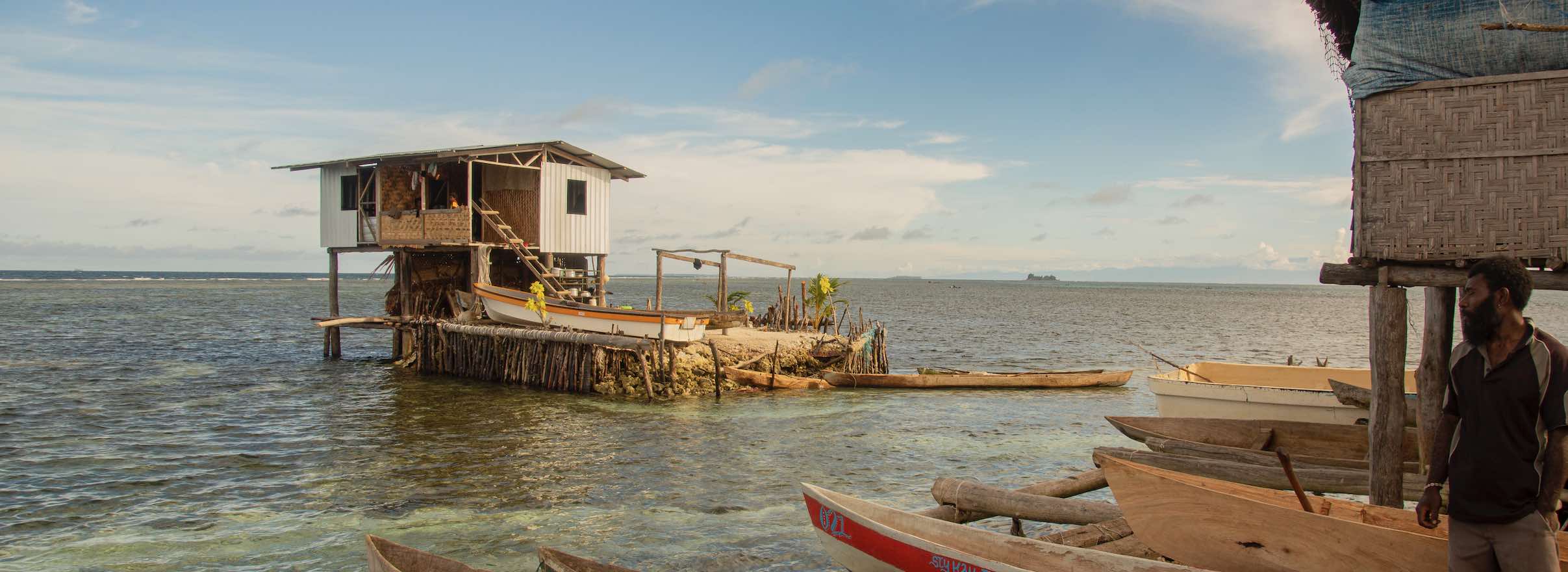

NAP-2: Advancing Moldova’s National Climate Change Adaptation Planning process
Funded by the Green Climate Fund (GCF) Readiness Programme, the "NAP-2: Advancing Moldova’s National Climate Change Adaptation Planning Process" project is supporting the Government of Moldova to develop the country’s national development plan for climate change adaptation. The project aims to 1) strengthen and operationalize the national steering mechanism for climate change adaptation, 2) improve the long-term capacity for planning and implementation of adaptation actions through CCA technologies; and 3) improve the mainstreaming of climate change adaptation in priority sectors through the increased alignment of national development priorities.
The project aims to address the barriers to prioritizing national investments in climate change adaptation and increase the human and financial capacity for the implementation of the priority actions identified during the NAP-1 project, including those that will emerge under this NAP-2 initiative. To accomplish this overall goal, the project activities have been designed to address the gaps and barriers also identified in the NAP-1 and the Stocktaking Report. Through the NAP process, Moldova is realizing a long-term paradigm shift towards climate resilience in its national and sectoral development planning.
The Government of Moldova sees the National Adaptation Planning (NAP) process as a key to achieving the adaptation objectives outlined in its 2014 Climate Change Adaptation Strategy and its Nationally Determined Contributions (NDC), as well as the continued mainstreaming of climate change considerations into its policies and budgeting processes. The NAP process was launched in 2014 through consultations with national stakeholders with the support of the Austrian Development Agency (ADA) and UNDP.
Over the last decade, the Republic of Moldova has experienced several extreme events, such as droughts and major floods. These events, coupled with the gradual impacts of rising average temperatures and uneven precipitation patterns throughout the year, have adversely affected the country's economy and the well-being and health of its population. Severe droughts are recurring more frequently causing significant economic losses. In 2007 and 2012, droughts resulted in estimated losses of approximately USD 1 billion and USD 400 million, affecting 80% of the rural population. Meanwhile, flood damages in 2008 and 2010 are estimated at around USD 120 million and USD 42 million, respectively. Climate projections suggest a continued rise in average temperatures and an additional 12 days with zero precipitation, posing ongoing challenges for the country.
In addition to the key implementing partner, the Ministry of Environment, other project partners include the Ministry of Infrastructure and Regional Development, Ministry of Energy, Ministry of Finance, Ministry of Health, and the National Commission on Climate Change.
Expected results:
- National Climate Change Adaptation Strategy updated with the NAP-2 overarching goal and sector-specific adaptation objectives articulated in the Climate Change Adaptation Action Plans of health and forestry sectors, and in the Development Action Plans of the transport, energy and building sectors.
- Monitoring and Evaluation system with improved data analysis to support decision-making developed.
- Climate Change Adaptation Capacity Development Plan updated and adopted by the five key sectors.
- Climate change information and knowledge management portal that supports the NAP process and mainstreaming of climate change adaptation considerations launched.
- Adaptation Plans for seven district towns developed.
- Technology Roadmap for each key sector (transport, energy, water, forestry and health) developed based on Technology Needs Assessment.
- 5 investment project ideas developed to be submitted to Green Climate Fund.
Project updates
The NAP-2 project actively engages with the Minister of Environment and key stakeholders, facilitating ongoing discussions on project activities, accomplishments, and challenges. Recognizing the need for a coordinated approach to climate change activities, the Ministry of Environment requested an analysis of the existing regulatory framework, aiming to identify gaps and propose operational coordination mechanisms. This effort has involved exploring options to upgrade the National Commission on Climate Change (NCCC), with potential integration with other bodies such as the National Council on Sustainable Development or the National Commission on Emergency Situations.
The National Climate Change Adaptation Programme (NCCAP) until 2030 and its Action Plan, approved by the Government on 30 August 2023, has been developed in a participatory manner that supports the alignment of the national adaptation goals with the aims of the Paris Agreement in transport, energy, water, forest, and health sectors. Guidelines and tools for conducting Climate Change Impact, Vulnerability, and Risk Assessments (CCIVRA) at sector and organization levels have been developed. The project has ensured that these tools are not only comprehensive but also user-friendly. Additionally, a Monitoring and Evaluation (M&E) framework for the NAP process has been devised.
The project has delivered the Climate Change Capacity Development Plan (CDP) which lays the foundation for strengthening institutional capacities to mainstream climate change considerations into sectorial policies and implementation of the policies. This has involved consultations to define sector-specific adaptation targets and integrating them into sectorial development plans. In addition, the Climate Change Knowledge Management Roadmapwas developed which provides a better understanding of the national capacities needed to produce, collect, and use climate change information and knowledge. This forms the foundation for the Climate Change Information and Knowledge Management Platform, a one-stop shop for all climate-related information under development.
The project has supported the assessment of the meteorological and hydrological network which enabled the State Hydro-meteorological Service of Moldova (SHS) to seek further support from Sweden, World Bank and Meteo-France International in terms of data digitalization and improving meteorological and hydrological monitoring. Market research was finalized for the introduction of new climate services and increasing awareness of the importance of hydrometeorological and climate services. Moreover, the SHS has developed the Law and Regulation on hydrometeorological activity and methodology for calculating tariffs for climate services.
Regarding the technology needs assessment (TNA), the ‘Identification and prioritization of adaptation sectoral technologies’ and ‘the Barrier Analysis and Enabling Framework of TNA analysis’ were conducted involving relevant stakeholders from the five priority sector Working Groups (water, transport, energy, forestry, health). As a result, 115 technology fact sheets (TFS) as well as elaborated versions of the 53 TFS were produced and measures to overcome barriers were identified.
Other recent activities have included further consultations on improving coordination mechanisms, creating a training curriculum and master's course on climate change adaptation in the health sector, and developing the NAP-3 project document, including a roadmap and financing plan. Furthermore, other activities have involved training, data collection methodologies, aligning national codes with EU standards, and supporting the Ministry of Infrastructure and Regional Development with construction standards/codes for at-risk assets in the transport and construction sectors.
The project objectives will be achieved through three outcomes, focusing on strengthening national capacities for mainstreaming climate change adaptation considerations, producing actionable climate risks and vulnerability assessments, and implementing effective methods, tools, and information systems to better inform decision-making on climate risks. The three outcomes build on each other in a progressive and interrelated approach that strengthens the national conditions for adaptation.
Outcome 1: National steering mechanism for climate change adaptation strengthened and operationalized
Outcome 2: Long-term capacity on planning and implementation of adaptation actions improved
Outcome 3: Mainstreaming of climate change adaptation is improved through the increased alignment of national development priorities, in the priority sectors (forestry, health, energy and transport).


Advancing medium and long-term adaptation planning in the Republic of Serbia
The project builds on Serbia’s Nationally Determined Contributions (NDC) commitments to advance medium and long-term adaptation planning in the Republic of Serbia with a National Adaptation Plan (NAP), providing support for iterative improvements to the NDCs under the enhanced transparency framework requirements. The project aims to enable the Government of Serbia to build and strengthen capacities for mainstreaming climate change adaptation, produce actionable climate risk and vulnerability assessments, and implement effective methods, tools and information systems to better inform decision-making on climate risks. Project activities address the main barriers to the integration of climate change adaptation into national, sectorial, and local government planning and budgeting, as well as support the formulation of financing strategies and mechanisms for the scaling up of medium- and long-term adaptation.
The "Advancing medium and long-term adaptation planning in the Republic of Serbia" project aims to increase the country’s capacity to address its climate change vulnerabilities. The project is proposed in two phases and focuses particularly in the areas related to the agriculture-water management nexus, and the sectors of energy infrastructure, transport infrastructure and construction.
Climate change impacts are already evident in Serbia. The IPCC AR5 has identified southeastern Europe, where Serbia is located, among the most vulnerable regions in terms of exposure to the negative effects of climate change. Climate change is expected to have adverse effects on the intensity and frequency of floods and droughts, and on the quality and quantity of yields of major crops. Serbia’s recent history of floods and natural disasters has shown that rural low-income communities are particularly vulnerable to the impacts of climate change due to heightened water insecurity, increased health risks and reduced agricultural productivity.
The project builds on UNDP support to Serbia in February 2017 that resulted in a stocktaking report and a plan of action to advance the National Adaptation Plan (NAP) process, validated by representatives of key sectors and the Ministry of Environmental Protection. The stocktaking exercise highlighted the existing weaknesses and demonstrated the prevailing barriers to climate change adaptation and disaster risk reduction planning in Serbia. The results confirmed that to adequately address climate change vulnerabilities, Serbia must overcome its current information gaps, capacity weaknesses, as well as a general lack of awareness of climate change adaptation – both at the national and sub-national levels. The report further identified that climate change is not integrated into existing policies, or their associated budget priorities.
The overall goal of the project is to reduce climate change related risks throughout Serbia by strengthening institutional and technical capacities that support integrated climate change adaptation planning and programming. This will be achieved through three outputs and related sub-outcomes across two phases:
- In the first phase, the emphasis is given to the development and setting up of the national mandate and steering mechanism for long-term climate change adaptation and capacity building for effective development of the NAP implementation strategy. The first phase also focuses on improved management of the adaptation related knowledge and data, addressing institutional capacity gaps and needs in specific sub-sectors and at all levels of governance, establishing a system for effective monitoring and reporting on climate change adaptation measures and actions;
- Building on the results and achievements from the first phase, the second project phase will focus on capacity building for setting up a sustainable financing strategy to support medium- and long-term climate change adaptation. Both project phases will be accompanied by a NAP and adaptation engagement and communications plan and concrete measures at both national and local levels.
In addition to the implementing partner, the Ministry of Agriculture, Forestry and Water Management, other project partners include the Ministry of Environmental Protection, Ministries in charge of energy, infrastructure and construction, local self-governments, Standing Conference of Towns and Municipalities, Chambers of Commerce, civil society and others.
Project updates
- A draft National Adaptation Plan (NAP) developed;
- Introduction of a bylaw (of Law on Climate Change) that will regulate the implementation of the NAP for the country and the preparation of provincial plans;
- Introduction of an advanced university degree programme on adaptation;
- Priority adaptation interventions in all key sectors identified;
- An interactive/digital climate atlas for Serbia launched;
- “Analysis of available climate and socio-economic information” conducted, establishing the current state-of-play and steps to be undertaken to build and strengthen institutional capacities for climate change adaptation;
- “Institutional capacities for climate change adaptation” report conducted, providing an overview on existing capacities and capacity building needs at the national and local self-government levels;
- “Existing policy, regulatory and institutional framework” report conducted and recommendations on improvement of specific policy and regulatory measures for climate change adaptation prepared;
- Reports on the impacts of climate change on key economic sectors such as agriculture and water management nexus, energy sector, construction and roads infrastructure, forestry and health with recommended adaptation measures;
- Economic assessment of the damage and losses caused by climate change for local self-governments conducted;
- Recommendations for better integration of nature-based solutions into the revised NDCs for Serbia provided;
- Representatives of the line ministries and other authorities participated in trainings, online workshops and consultative meetings on climate change adaptation.
- A series of press workshops held on the topic of climate change in Serbia, involving more than 500 stakeholders, at national and local levels.
Outcome 1: National mandate and steering mechanism in place for long-term climate change adaptation
Outcome 2: NAP implementation strategy developed
Outcome 3: System to monitor progress on adaptation strengthened and financing strategy for medium- and long-term climate change adaptation established.
Webinar: “National adaptation plan (NAP) systematic and risk-shaped response to climate change” (2020)
Održan prvi Dijalog o prilagođavanju Srbije na klimatske promene (2021)
The first workshop for journalists on the topic of climate change in Serbia (2021)
Continuation of training on the topic of adaptation to climate change within the NAP project (2021)
The third training in a row on the topic of adaptation to climate change within the NAP project (2021)











